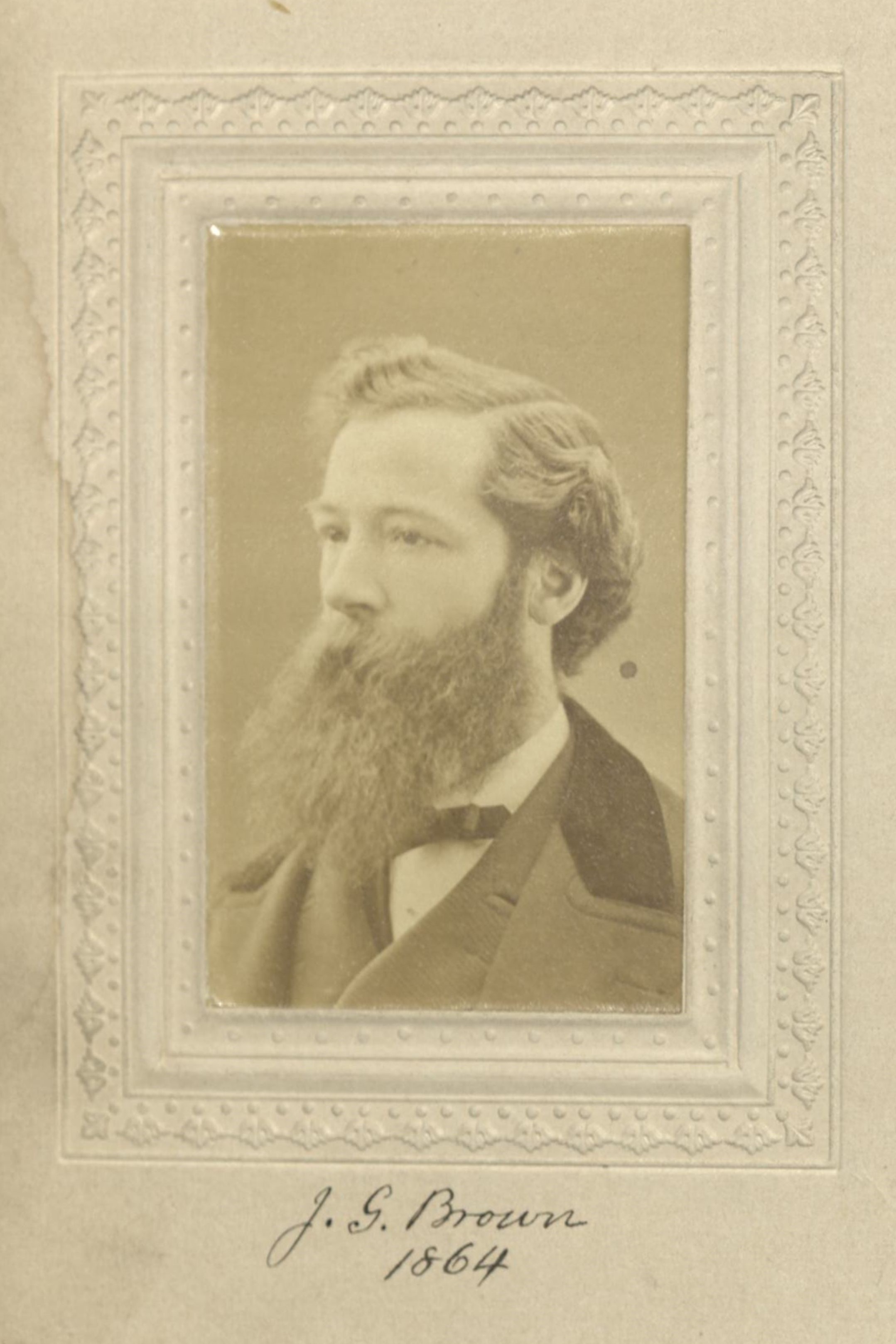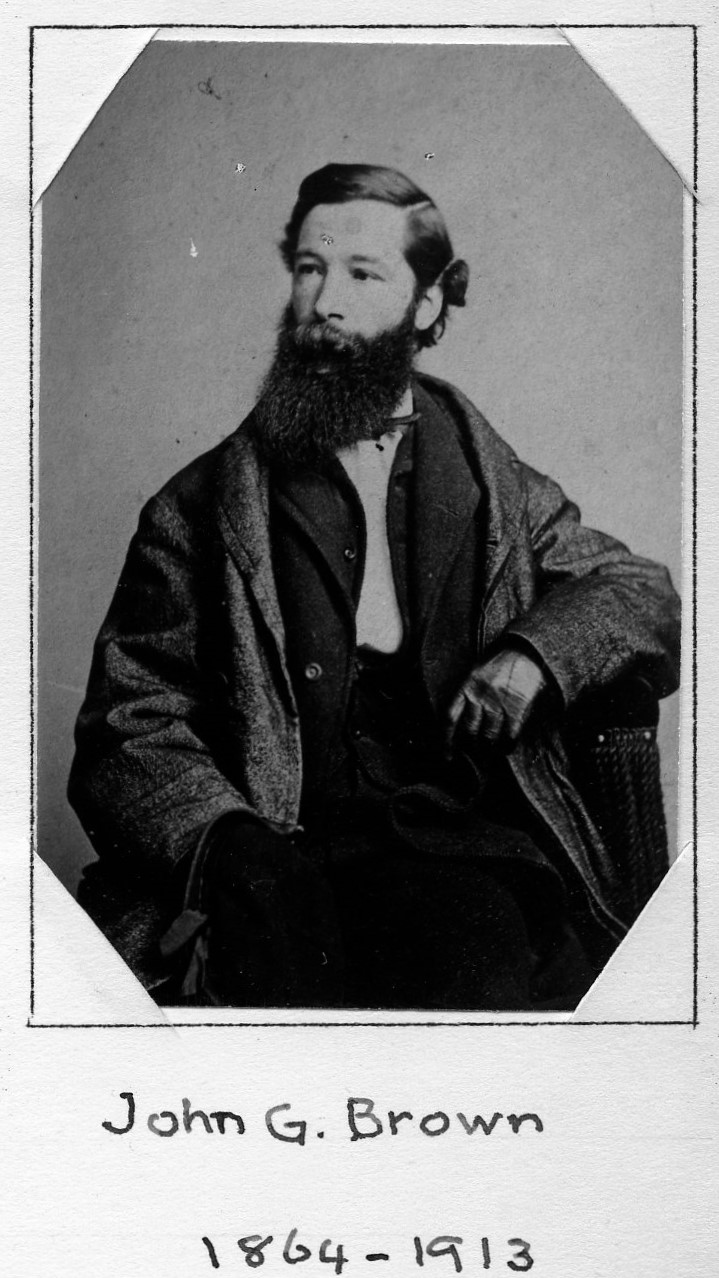Artist
Centurion, 1864–1913
Born 11 November 1831 in Newcastle-upon-Tyne, England
Died 8 February 1913 in New York (Manhattan), New York
Buried Green-Wood Cemetery , Brooklyn, New York
, Brooklyn, New York
Proposed by William Kemble
Elected 6 February 1864 at age thirty-two
Seconder of:
Century Memorial
Sympathy and kindness inspired the devotion of John George Brown to the chosen subjects of his art. There is no need to name them—the doings and beings-done-by of the courageous, impudent, cheerful street boy of the last generation. The artist was a north of England man, and passed his boyhood at Newcastle-on-Tyne. His first craft was that of a glass-cutter; but he could not keep from painting, portraiture alluring him especially. In London, in 1853, his heart was moved to come to America, and, reaching New York, he again supported himself as a glass-worker for a while, until his painting gathered vogue. From portraiture he soon passed to his famous scenes of street life, which became so popular that he was hardly permitted to paint anything else. The fruit of sympathy and ability, they brought a steady income to their maker. Brown became an Academician in 1861, and was elected vice-president of the Academy in 1869. He was later president of the American Water Color Society and the Artist Fund Society. At the time of his death he was a last survivor of those whose work and jollity made famous the studio building of No. 51 West Tenth Street.
Henry Osborn Taylor
1914 Century Association Yearbook


